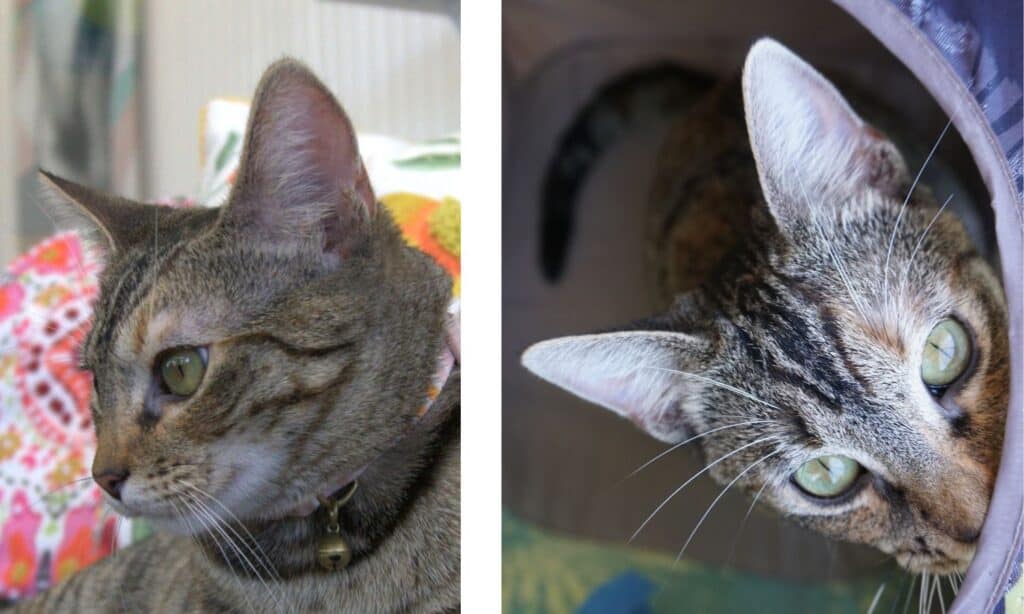Unless they are a hairless breed, most cats have a pretty thick covering of fur over almost all of their bodies. Depending on the cat, the coat of fur can have between one to three layers and vary in length from shorthair to longhair.
Once place you might notice where the fur is thinner is between the upper eye and the ear. Thinner fur in this area in cats as they age is normal according to Small Animal Dermatology and is called preauricular alopecia or facial alopecia. Auricle refers to the pinna, or outer flap, of the ear and pre means before the ear.
When does facial alopecia start in cats?
Cats typically start to experience facial alopecia in the area between their ears and eyes when they are between 14 to 20 months old. It is a normal process for adult cats to have thinning fur develop between their eyes and ears. Most noticeably, this fur thinning is seen as a bald spot above the eyes of adults cats. The thinning
Is facial alopecia more common in black cats?
While preauricular alopecia is commons in all types of cats, it tends to be the most notable in darker fur colored cats because of the contrast between the fur and underlying skin. The sparse fur between the eyes and ears is also more obvious is shorthair cats compared to longhair cats.

Facial alopecia is also more evident when looking at a cat’s face from the side. These side by side photos of a two-year old torbie show how this female’s cat preauricular alopecia is starting to emerge. The frontal view of the torbie cat makes the fur between her eyes and ears look full. The side view shows how the fire between her eyes and ears is starting to thin.

When is facial alopecia a problem in cats?
If your cat is starting to experience fur loss in other areas of their face or body, it could indicate a health issue.
Excessive grooming caused by stress, anxiety, or an underlying health issues can result in balding on a cat. Infections such as ringworm, a fungal infection, can also result in the loss of fur in spots. Allergies, respiratory illnesses, nutritional deficiencies, cancer, and inflammation are other ailments that can lead to hair loss.
If you are concerned about your cat’s hair loss, please consult your veterinarian.
Quick overview: Why cats have bald spots above their eyes
References
Ashley, P. (2019). Non‐endocrine alopecia. Clinical Atlas of Canine and Feline Dermatology, 309-322.
Hnilica, K. A., & Patterson, A. P. (Eds.). (2017). Chapter 9—Hereditary, Congenital, and Acquired Alopecias. In Small Animal Dermatology (Fourth Edition) (pp. 302–352). W.B. Saunders. https://doi.org/10.1016/B978-0-323-37651-8.00009-2
Moriello, K. A. (2018, August 23). Hair loss (Alopecia) in cats – Cat owners – Merck veterinary manual. Merck Veterinary Manual. https://www.merckvetmanual.com/cat-owners/skin-disorders-of-cats/hair-loss-alopecia-in-cats






